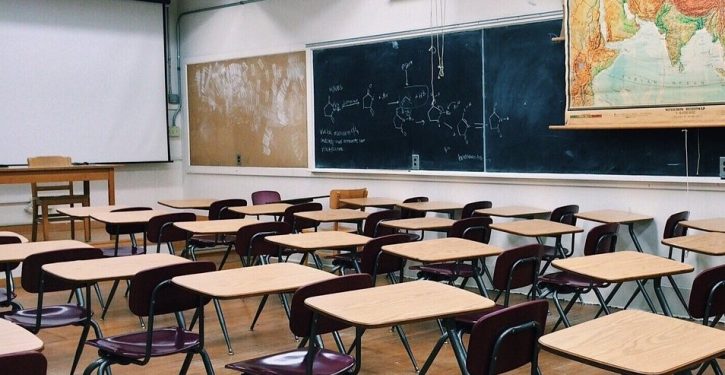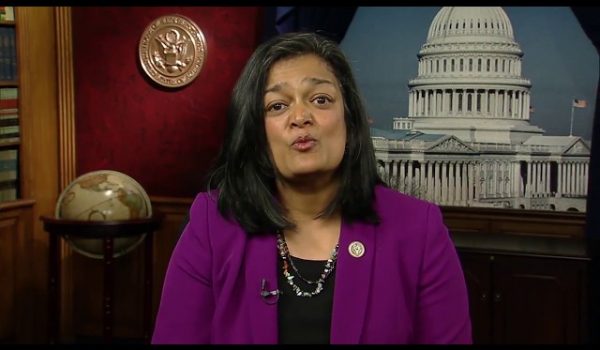
Record numbers of teachers are being physically attacked in America’s schools, as policies have changed to make it harder to suspend students who repeatedly defy their teachers.
CNS News reports:
A record 220,300 public school teachers reported that they were physically attacked by a student during the 2015-2016 school year, according to a report jointly published this month by the National Center for Education Statistics and the Bureau of Justice Statistics.
The 220,300 public school teachers who said they were physically attacked by a student in 2015-2016 is up from the 197,400 who said they were attacked by a student in 2011-2012 (which is the last school year before 2015-2016 for which teachers were surveyed on the question).
In recent years, many school systems have curbed suspensions of students who engage in “willful defiance” of their teachers. California plans to eliminate suspensions for all K-12 students for “willful defiance” (previously, it was an option for kids in grades 4-12).
Will this presidential election be the most important in American history?
California’s State Senate has voted 30-to-8 to ban such suspensions, and the State Assembly is expected to enact the ban into law. California’s legislature previously passed such a ban in 2018, but it was vetoed by former Governor Jerry Brown, who viewed it as too extreme. But Brown is no longer in office, and this time the ban is expected to become law.
In California, suspensions for willful defiance had already fallen a lot in recent years. For example, in the 2015-16 school year, 96,421 students were “suspended for willful defiance – a decrease of nearly 30,000 from 2014-15 school year.”
A single willfully defiant student can set back learning for the entire class. Students who assault teachers and classmates often do so after remaining in class despite repeated willful defiance.
Why, then, is California’s legislature doing this? It’s about racial bean-counting. As the Sacramento Bee reports:
Research has shown the category of willful defiance was disproportionately used to discipline minority students, specifically African-Americans. … African-American students made up 5.6% of enrollment in California schools in 2017-18, but accounted for 15.6% of willful defiance suspensions. Conversely, white students made up 23.2% of statewide enrollment but made up only 20.2% of willful defiance suspensions.
The reason why African-American students made up a disproportionate share of willful defiance suspensions is because a disproportionate share of students who engage in willful defiance are African-American. A 2014 study by John Paul Wright and several other professors in the Journal of Criminal Justice found that higher rates of “prior problem behavior” among black students — not racism — explained why black students are suspended at a higher rate.
Black students are not singled out for “willful defiance” suspensions more than other suspensions. The black share of suspensions for willful defiance is lower than the black share of suspensions for misconduct in general. In California, blacks are suspended for misconduct at more than four times the white rate, and nearly 15 times the rate for Asians, who have the lowest suspension rate of all races. (See Tom Loveless, The 2017 Brown Center Report on American Education: How Well Are American Students Learning?, Brookings Institution, March 2017, pg. 25).
Supporters of banning suspensions for “willful defiance” cite its allegedly “highly subjective” nature. But that is not a reason to tolerate willful defiance that undermines classroom learning. A federal appeals court pointed that out in striking down as an unconstitutional racial quota a rule that forbade a “school district to refer a higher percentage of minority students than of white students for discipline unless the district purges all ‘subjective’ criteria from its disciplinary code.” As the court observed, “important disciplinary criteria (such as disrupting classes) are unavoidably judgmental and hence ‘subjective.’” (See People Who Care v. Rockford Board of Education, 111 F.3d 528, 538 (7th Cir. 1997)).
But that is not a reason to get rid of such rules or thwart their enforcement. They are essential to creating an environment where learning can occur.
Also, subjectivity in discipline isn’t why blacks are suspended at a higher rate than whites. The federal appeals court in Philadelphia noted in 1996 that “statistical data” showed larger racial differences in discipline rates for serious, “very objective” offenses than for minor, “less objective” offenses. It also cited a lack of evidence for the notion that “misbehavior” occurs at the same rate among all “racial groups.” (See Coalition to Save Our Children v. State Board of Education of Delaware).
Curbing suspensions of willfully defiant students harms innocent African-Americans by reducing their ability to learn and be safe. After all, much violence is black-on-black, and when a black student constantly disrupts class, that harms black classmates’ ability to learn. After suspensions were curbed in New York City, the Manhattan Institute’s Max Eden found that “schools where more than 90% of students were minorities experienced the worst” effects on school climate and safety. Indeed, the harm from curbing suspensions had “a disparate impact by race and socioeconomic status.” Eden noted in the New York Post that another “study by a University of Georgia professor found that efforts to decrease the racial-suspension gap actually increase the racial achievement gap.” Joshua Kinsler found that “in public schools with discipline problems, it hurts those innocent African American children academically to keep disruptive students in the classroom,” and “cutting out-of-school suspensions in those schools widens the black-white academic achievement gap.”
The higher black suspension rate is not surprising to many observers, given the higher black crime rate and the fact that black kids are more likely to come from struggling single-parent households that fail to instill discipline. As even the liberal Brookings Institution has noted, “Black students are also more likely to come from family backgrounds associated with school behavior problems; for example, children ages 12–17 that come from single-parent families are at least twice as likely to be suspended as children from two-parent families.” (2017 Brown Center Report on American Education, pp. 30-31). The homicide rate is 10 times higher among black teens than white teens. And the Supreme Court rejected the “presumption that people of all races commit all types of crimes” at the same rate, as being “contradicted by” reality, in its decision in U.S. v. Armstrong.
Supporters of curbing school discipline say it is necessary to prevent racially “disparate impact,” which they define in a racial quota-like way, to mean anytime a higher percentage of black students is disciplined than of students of other races. But as I and others have explained in the past, that wrongly defines “disparate impact,” legally speaking. It also pressures school districts to have racial quotas in discipline.
“Disparate impact” only matters in the eyes of the Supreme Court when it takes into account the racial composition of the “qualified population,” meaning those students who actually misbehaved. Students who didn’t misbehave can’t be suspended to meet a racial quota, and they shouldn’t be included in any “disparate impact” comparison, either, because they aren’t part of the qualified population.
The rate at which a racial group is disciplined should be compared to that group’s actual misbehavior rate, not its percentage of the student body, because the student body is the general population, not the qualified population. What matters is if a school system’s discipline system has flaws that are causing the black or Hispanic percentage of the students disciplined to be higher than the black or Hispanic percentage of the students who misbehaved (for example, a failure to accommodate students’ inability to speak English in the disciplinary process, leading to Hispanic immigrants often being unable to defend themselves against false charges). But if the black percentage of students disciplined is high only because a lot of black students in fact misbehaved, that is not “disparate impact,” under the “qualified population” approach of the Supreme Court’s decision in Ward’s Cove Packing Co. v. Atonio, 490 U.S. 642, 651 (1989).
Assessing whether disparate impact exists in discipline should take into account people’s behavior, such as that reflected in “prior records of discipline,” not just compare discipline rates to the racial breakdown of the workforce or student body. (See, e.g., Mozee v. American Commercial Marine Ins. Co., 940 F.2d 1036, 1047-49 (7th Cir. 1992)).




